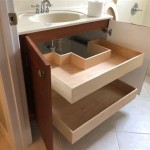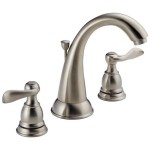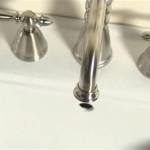How To Snake a Bathroom Sink Drain
A clogged bathroom sink is a common plumbing issue often caused by hair, soap buildup, toothpaste residue, and other debris accumulating in the drain pipe. Snaking the drain is a relatively simple and effective method to clear these blockages and restore proper drainage.
Necessary Tools and Materials
Gathering the proper tools beforehand streamlines the process. The following items are typically required:
- A bucket or container
- Pliers or adjustable wrench
- Drain snake (also known as a plumber's snake or auger)
- Gloves (optional but recommended)
- Old towels or rags
Preparing the Work Area
Preparation minimizes mess and allows for efficient cleaning afterward. These steps ensure a smoother process:
- Place the bucket beneath the sink’s P-trap to catch any spilled water.
- Lay down old towels or rags around the work area to protect the surface from water and debris.
- Put on gloves to protect hands from bacteria and grime.
Removing the P-Trap
The P-trap is the curved section of pipe beneath the sink. Removing it allows direct access to the drainpipe and often reveals immediate blockages.
- Loosen the slip nuts that connect the P-trap to the drainpipe and the tailpiece using pliers or an adjustable wrench.
- Carefully remove the P-trap, allowing any remaining water to drain into the bucket.
- Inspect the P-trap for clogs and remove any visible debris.
Inserting the Drain Snake
The drain snake is the primary tool for clearing deeper clogs within the drainpipe. Proper insertion technique is crucial for effectiveness.
- Insert the end of the drain snake into the drain opening where the P-trap was connected.
- Rotate the handle of the drain snake clockwise while pushing it further into the drainpipe. This action helps the snake navigate bends and break up clogs.
- Continue feeding the snake until resistance is felt, indicating it has likely reached the clog.
Breaking Up the Clog
Once the snake encounters the clog, several techniques can be used to break it up and remove it.
- Rotate the snake vigorously clockwise and counterclockwise to break apart the obstruction.
- Retrieve the snake slowly, pulling out any debris caught on the tip.
- Repeat the process of inserting and retrieving the snake several times to ensure thorough clog removal.
Flushing the Drain
After removing the clog, flushing the drain verifies its effectiveness and clears any remaining debris.
- Reattach the P-trap, ensuring the slip nuts are tightened securely.
- Run hot water down the drain for several minutes to flush out any remaining debris and test the drainage.
- Observe the drain for proper flow. If the drain is still slow or clogged, repeat the snaking process.
Using a Drain Cleaner (Optional)
While snaking is often sufficient, a chemical drain cleaner can be utilized as a supplementary step to dissolve any remaining soap scum or grease.
- If the drain is still running slowly after snaking, carefully pour a recommended amount of drain cleaner down the drain, following the manufacturer's instructions.
- Allow the drain cleaner to sit for the specified time, typically 30 minutes to an hour.
- Flush the drain thoroughly with hot water to remove the cleaner and any remaining debris.
Preventing Future Clogs
Proactive measures can minimize the occurrence of future clogs, saving time and effort.
- Install a drain strainer to catch hair and other debris before they enter the drain.
- Periodically flush the drain with boiling water to dissolve soap buildup and grease.
- Avoid pouring grease, oil, or food scraps down the drain.
Alternative Methods
If snaking doesn't resolve the clog, other methods can be employed.
- A wet/dry vacuum with a crevice attachment can sometimes dislodge clogs near the drain opening.
- For more stubborn clogs, contacting a professional plumber is recommended. They have specialized tools and expertise to handle complex plumbing issues.
Maintaining Drain Health
Regular maintenance helps ensure optimal drain performance and prevents recurring clogs.
- Clean the drain strainer regularly to remove accumulated hair and debris.
- Flush the drain with hot water at least once a week to prevent buildup.
- Consider using a natural drain cleaner made from baking soda and vinegar as a preventative measure.

How To Unclog A Bathroom Sink With Snake

How To Use A Plumbing Snake And When It S Necessary Wm Buffington Company

6 Step Guide How To Use A Plumbing Snake Stephens

How To Snake Your Bathroom Sink

How To Use Drain Snake Unclog A Bathroom Sink

What S A Drain Snake Pipe Auger Clearing

How To Snake A Bathroom Drain Ace Hardware

How To Unclog A Bathroom Sink Hana S Happy Home

How To Snake Your Bathroom Sink

Snaking The Drain Of Your Bathroom Sink
Related Posts







